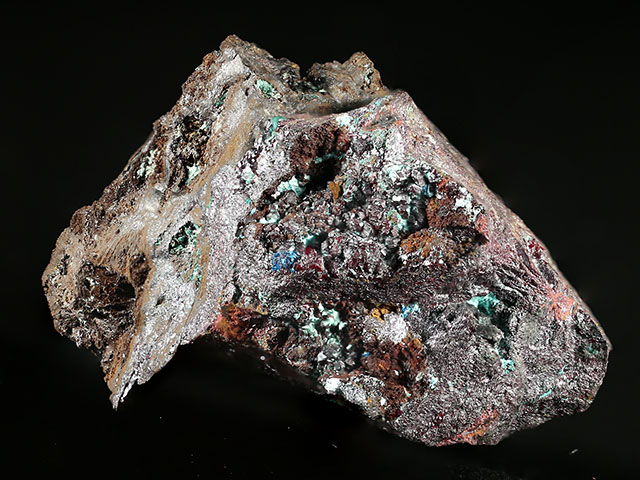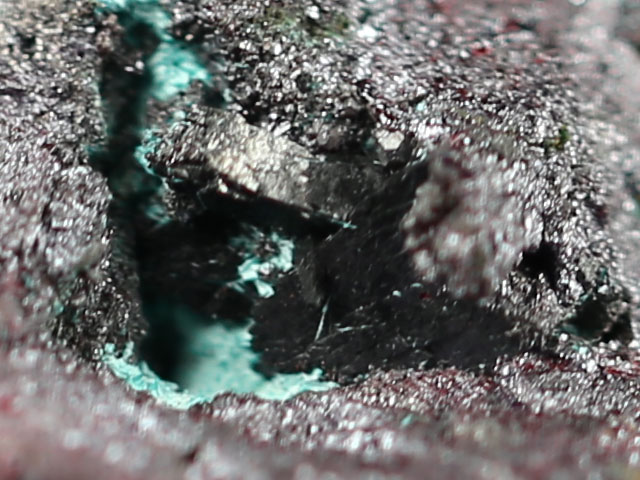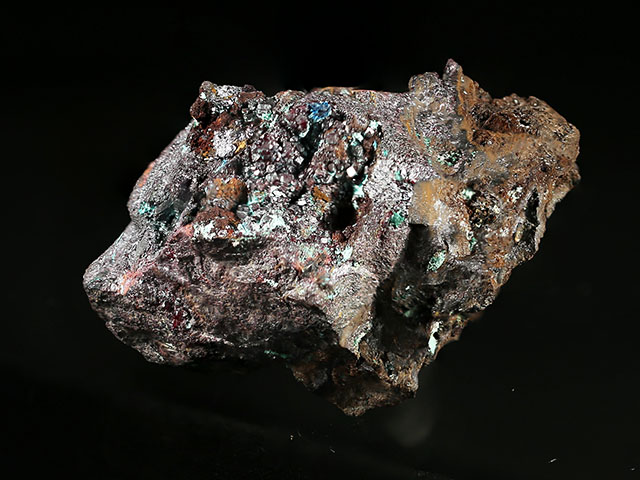Home > Pseudomorphs – March 3 > MS1514 Tenorite after Paramelaconite
Tenorite after Paramelaconite - Sold
- Ojuela mine
- Mapimí
- Durango
- Mexico
- 6.1 by 4.2 by 3.3 cm – Small cabinet specimen (under 10 cm)
Tenorite, paramelaconite, and cuprite are all oxides of copper. Cuprite has copper in +1 oxidation, tenorite has copper in +2 oxidation state, while paramelaconite has both +1 and +2 copper (Frondel, 1941). Cuprite is a long known red copper oxide, but ultimately Haidinger (1845) assigned the species its modern name. Semmola (1841) named tenorite after Michele Tenore (1781-1861), natural historian at the University of Naples. Koenig (1891) named paramelaconite by combining the Greek root para, near, with melaconite, then a valid species name. The mineral name melaconite was later discredited by the International Mineralogical Association in favor of tenorite (IMA, 1962).
In 2009, a few hundred kilograms of massive cuprite were recovered from the Cumbres stope of the Ojuela mine. Careful trimming of the material and examination uncovered less than a dozen of these tenorite pseudomorphs after paramelaconite. This specimen has a cluster of pseudomorphs to 4 mm long in a tight vug in cuprite. Also present on this specimen are microcrystals of blue platy claringbullite, pocket linings of cuprite crystals to 2 mm, minor fibrous brochantite, fibrous malachite, and brown crystalline hisingerite. Formerly in the collection of Anthony Gleckler; his label accompanies the specimen.



